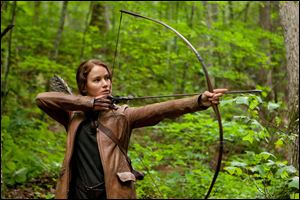Right On Target
A recent article by Leanne Italie reveals how children (mostly girls) across the nation, after seeing The Hunger Games, have enthusiastically taken up archery. There has been an obvious sales increase in archery-related products as girls, inspired by Katniss’ deadly skills with a bow, continue to flock to archery stores to purchase bows that resemble the one in the movie. The article gives various accounts of girls’ experiences with the unique sport, the majority of which seem positive. One girl likes “the fact you can ignore the world around you and just focus on where the arrow is going to go.” Parents seem to be on board with their children’s fascination with archery, claiming “they’re a little more dedicated” than with sports that primarily consist of chasing a ball.
Compared to the article we discussed in class that asserts underlying immoralities in The Hunger Games, reading this article was refreshing. I say this because its information is based on a large number of actual reactions rather than Timothy Noah’s sole opinion of the movie (instead of the book). In class we established that The Hunger Games novel contains a good deal of information that was cut from the movie. Contrary to Noah, Italie presents numerous positive outcomes of children (girls in particular) seeing The Hunger Games. Because of Katniss, thousands of girls have taken up a hobby that exercises focus, dedication, and confidence. Archery offers an alternative to team sports. As someone who played high school football and hated it, I can understand why some kids would rather take up a sport that focuses on individual skills. After reading this article, my standpoint is that most children do not search for underlying themes concerning morality in movies like The Hunger Games. They search for identity in a virtual space that will never be available to them in reality. As this article clearly demonstrates, thousands of young girls have found identity through Katniss’ heroic archery skills. In conclusion, I think its okay for children to see The Hunger Games with parents since they are evidently more likely to imitate impressive qualities in the characters than to contemplate the human potential to do evil deeds.


















